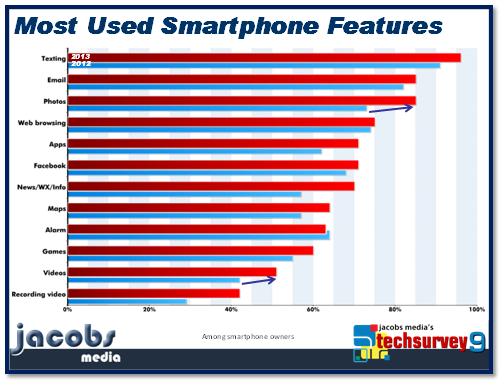Hard to believe that it was about a month ago that we were all glued to our TVs, watching the developments in the Boston Marathon bombing.
Aside from the tragedy itself, one of the most interesting aspects of the ensuing investigation revolved around how video and pictures broke the case open. In fact, law enforcement agencies made their way through 10 terabytes of data from consumer cell phones, retail store cameras, and other video sources in order to better understand what happened and who did it.
And from a sharing standpoint, social media becomes more powerful when there are pictures and visuals within the content. An ROI Research study from last year shows that people most enjoy posts that contain photos. Videos will rapidly rise up the list, too, as more and more people use their smartphone as cameras and camcorders.
We know that the Holy Grail of social media for radio is when our audience loves our content so much that they share it with their communities. As we learned in Techsurvey9, more and more people are frequently sharing things socially, opening up the doors to radio brands that seize the opportunity. The beauty of our research is that it clearly identifies who these “serial sharers” are and how to reach them.
But this process requires a deeper understanding of the consumer mindset and how they use their smartphones in everyday life. We provided owners of iPhones, Android handsets, and BlackBerry devices the opportunity to tell us how they use their smartphones most often. The results are telling.
While just about every smartphone function shows greater usage year to year, it is the sharing of pictures and video that has shown some of the most impressive increases:
And wouldn’t you know it – “frequent sharers” are considerably more likely to take and pass along pictures and video, as are those with an Apple or Android phone.
So it lines up really nicely – more viral sharing takes place when consumers utilize pictures and video. And because so many great radio brands have a solid, loyal audience, focusing on-air, promotion and marketing activity that is visual just makes sense.
Yet, it is simply not a common topic of conversation in programing and promotions meetings. Thinking about the notion that everyone has a camera (or camcorder) should change the way that stations approach concerts, events, and other local activities where people gather.
And because the essence of radio is about people – DJs, personalities, and their audiences – the potential for broadcasters to do so much more in this space is an opportunity waiting to happen. It’s something that satellite radio and pure-plays just aren’t going to be able to mobilize. And for both programming and sales, putting the audience to work at events and promotions just makes so much sense.
It all comes down to rethinking the audience. They are no longer passive players waiting to hear what we’re going to do next. They are active, social, and engaged. Shine the spotlight on them, provide them something worth sharing, be open to their content, and give them a seat at the table.
It’s time to start thinking visual.
- What To Do If Your Radio Station Goes Through A Midlife Crisis - April 25, 2025
- A 2020 Lesson?It Could All Be Gone In A Flash - April 24, 2025
- How AI Can Give Radio Personalities More…PERSONALITY - April 23, 2025






Synchronicity is designed to bring “all of that” to terrestrial radio which can then deliver it to many, many more listeners wherever they are 😉